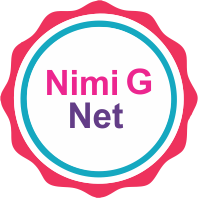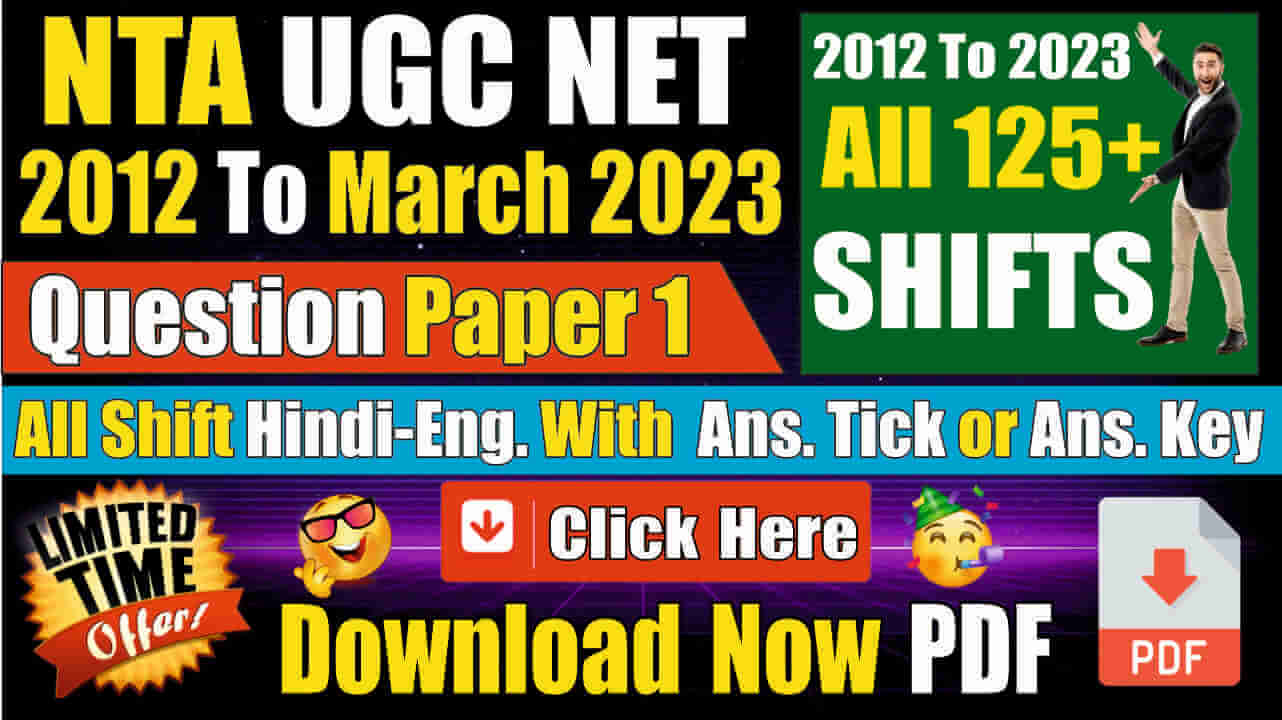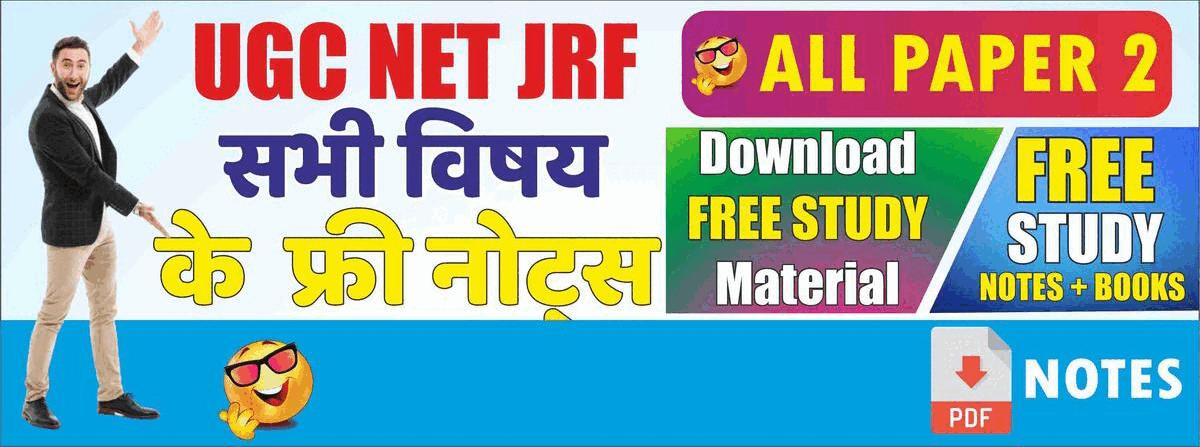Are you searching for the UGC NET Performing Art Syllabus 2023 PDF Download? Look no further, as we have compiled all the important details and tips to help you prepare for the exam.
The UGC NET Performing Art exam is conducted by the National Testing Agency (NTA) for candidates who wish to pursue a career in the field of Performing Art. The exam assesses the candidates’ knowledge in the subject and tests their eligibility for lectureship and research fellowships.
If you are planning to appear for the UGC NET Performing Art 2023 exam, it is important to have a thorough understanding of the syllabus and exam pattern. In this article, we have compiled all the important information you need to know about the UGC NET Performing Art Syllabus 2023 PDF Download
UGC NET Performing Art Exam Pattern 2023:
The UGC NET Performing Art exam consists of two papers – Paper 1 and Paper 2. Both papers are conducted on the same day, and the duration of each paper is 3 hours. The exam is conducted online, and each question carries 2 marks. There is no negative marking for incorrect answers.
The UGC NET Performing Art Exam consists of two papers: Paper 1 and Paper 2.
Paper 1:
- Duration: 3 hours
- Number of questions: 50
- Total marks: 100
- Type of questions: Multiple Choice Questions (MCQs) based on general aptitude, teaching and research aptitude, and current affairs.
Paper 2:
- Duration: 3 hours
- Number of questions: 100
- Total marks: 200
- Type of questions: MCQs based on Performing Art subjects.
Both papers are conducted in a single session with no break in between. The candidates are required to appear for both papers to be considered for the selection process.
It’s important to note that there is no negative marking for incorrect answers in UGC NET Performing Art Exam.
UGC NET Performing Art Syllabus 2023: Download PDF
The UGC NET Performing Art syllabus is divided into two parts – Paper 1 and Paper 2. Here’s a detailed syllabus for both papers.
Paper 1 Syllabus:
Teaching Aptitude:
- Teaching: Nature, objectives, characteristics, and basic requirements.
- Learner’s characteristics: Characteristics of adolescent and adult learners, and individual differences.
- Methods of teaching: Teacher-centered vs. learner-centered methods; Off-line vs. online methods.
- Evaluation systems: Elements and types of evaluation, evaluation in higher education, and grading system.
Research Aptitude:
- Research: Meaning, types, and characteristics.
- Steps of research.
- Methods of research.
- Research Ethics.
Reading Comprehension:
- Comprehension passages.
Communication:
- Communication: Nature, characteristics, types, barriers, and effective communication.
- Verbal and non-verbal communication.
- Classroom communication.
Logical Reasoning:
- Understanding the structure of arguments.
- Evaluating and distinguishing deductive and inductive reasoning.
- Verbal analogies.
Data Interpretation:
- Sources, acquisition, and interpretation of data.
- Quantitative and qualitative data.
- Graphical representation and mapping of data.
Paper 2 Syllabus:
Nta Ugc Net Performing Art – Dance/Drama/Theatre Syllabus 2023 in English
Here you can check the latest UGC NET Syllabus For Performing Arts Paper-II 2021 for English Medium.
Unit 1 to 5 Common syllabus for Dance and Drama/Theatre
Unit 1. Cultural History of India
- Cultures of India from pre-historic to CE 1200
- Evolution of Art in pre-historic and historic periods, as evidenced in cave paintings, sculptures and other visual representations
- Evolution of dance and drama (Natya), (a) the divine origin theory according to Natyasastra, and, (b) art as a product of society, its rituals and belief systems
- The Vedas, major epics and Puranas (Ramayana, Mahabharata, Cilappadikaram and Bhagavatapurana) in terms of their content, character and relevance to dance and theatre
- Bhakti and various religious movements and their influence on different representative aspects of culture with a focus on dance and theatre
Unit 2. Folk and Traditional Theatre Forms of India
- Understanding and defining the terms Tribal, Folk, Traditional and Classical in the context of Indian dance and drama and their interrelation
- Introduction to the different tribal, folk and traditional dance and theatre forms spread over various regions of India
- Introduction to regional theatrical practices of Kudiattam, Yakshagana, Bhagavatamela, Tamasha, Ramalila, Rasalila, Bhavai, Nautanki, Jatra, Chhau, Laiharaoba, Therukoothu, Theyyam, Ankia-nat, Pandvani, Chindu Bhagavata, Bhand Jashan and others
- Awareness of various musical instruments, costumes and make-up used in these forms
Unit 3. The Natyasastra
- Knowledge of Natyasastra and the concept of Natya and Nritta
- Study of chapters relating to the eleven aspects (Ekadashi sangraha) such as Abhinayas, Dharmis, Vrittis, Pravrittis and Aatodyas. Samanya and Chitrabhinayas and their classification
- Dasarupakas
- Natyagruha (Playhouse) and Ranga – Construction, types and different elements
- Poorvarangavidhi and Stage conventions viz. Kakshya vibhag etc
Unit 4. Art and Aesthetics
- Rasasutra’ of Bharata
- Elaboration of the theory of Rasa by commentators like Bhattalollata, Sri Sankuka, Bhattanayaka and Abhinavagupta
- Rasa and its constituent elements, viz., Sthayi, Sanchari and Sattvika bhavas and their corresponding Vibhavas and Anubhavas
- Definition, purpose and elements of Art
- A brief introduction to Performance studies and significant western theories on Art: ‘Art as Imitation/Catharsis’, ‘as Imagination’, ‘as Beauty’, ‘as Communication’ and ‘as Utility’ put forth by various Philosophers
Unit 5. Dance and Theatre forms of East and South Asian Countries
- An overview of dance and theatre forms of East Asian (China, Japan and Korea), South Asian (Bangladesh, Pakistan and Sri Lanka) and South-East Asian (Indonesia, Thailand, Vietnam, Cambodia, Myanmar, Philippines and Laos) countries
- History and presentation techniques of various popular theatre and dance forms of the above countries.
Dance
Unit 6. Dance in Sanskrit Literature and Treatises
- A brief study of references to dance in the works of Kalidasa, Bhasa, Sudraka and others
- General understanding of the concepts relating to dance from texts of the ancient and medieval period- Natyasastra, Abhinaya Darpana, Sangeeta Ratnakara, Nritta Ratnavali and Nartana Nirnaya. Concepts include Natya, Nritta, Nritya, Lasya, Tandava, Marga, Desi, Baddha, Anibaddha, Nartaki Lakshana, Sabha Lakshana and the like. Also specific study of the padas, hastas, caris, mandalas and karanas, and anga, upanga and pratyanga movements
- Detailed study of Abhinaya Darpana along with an introduction to other region/form specific texts like Hasta Lakshana Deepika, Balarama Bharatam, Abhinaya Chandrika, Srihasta Muktavali and others
- The various categories and typologies of Nayakas and Nayikas and their avasthas according to Bharata’s Natyasastra, Saradatanaya’s Bhavaprakasana, Bhanudatta’s Rasamanjari and Akbar Shah’s Sringaramanjari
Unit 7. India Classical Dance
- Origin and history of Indian classical dance
- Evolution, technique, costumes, music, Gurus and pioneers of Bharatanatyam, Kathak, Kathakali, Kuchipudi, Manipuri, Mohiniattam, Odissi and Sattriya
- General understanding of major Talas of Hindustani and Carnatic music traditions
- A brief study of Composers/Vaggeyakaras and their works including Jayadeva, Narayanateertha, Surdas, Meera Bai, Tulasidas, Vanamalidas, Kshetrayya, Srimanta Shankar Deva, Govindadas, Vidyapati, and others.
- Study of the role of Rabindranath Tagore, Rukmini Devi Arundale, Vallathole Narayana Menon, Madame Menaka and others in the revival and reconstruction of classical dance
Unit. 8 Indian Classical Dance in Independent India
- An overview of major Gurus, performers, their works and important institutions in Independent India
- Institutionalization of dance and its effect on form, pedagogy, repertoire etc.
- The new wave in Indian dance – Its development through the works of Uday Shanker and Ram Gopal and the later major contemporary artists and their works. (eg. Shantibardhan, Narendra Sharma, Sachin Shanker, Mrinalini Sarabhai, Maya Rao, Kumudini Lakhia, Manjusri Chaki Sarkar, Chandralekha, Astad Deboo and others)
- Indian classical dances in the diaspora
- Patronage to Dance- the role of government and private bodies
- Awareness of important dance festivals, awardees and current happenings in dance
Unit 9. Dance Education, Pedagogy and Research
- Dance as part of the curriculum in school education and Universities
- Movement Analysis based on kinesthetics and Laban system
- Eminent scholars and their works, who contributed significantly to the knowledge of Indian dance
- Key inroads in dance training and research in India from the 1930’s to the present like applied areas of dance, therapy, cross-cultural training etc
Unit 10. International dance and interactions
- Study of the history and development of classical ballet in Europe, Russia and America
- The emergence of Modern Dance in the west and major personalities involved
- Influence of the West on Indian dance in terms of production design
Drama/Theatre
Unit 6. Drama and its theories: Indian and Western
- Concept of drama- Indian and Western
- Elements and structure of drama according to Indian and Western Dramaturgy
- A brief study of different classifications of Western dramas – Tragedy, comedy, tragic comedy, melodrama and farce
- A brief introduction to various ‘isms’ in relation to drama including realism, naturalism, symbolism, expressionism, absurd and epic
- Playwrights and their contribution:
Sanskrit – Kalidasa, Bhasa, Sudraka, Bhavabhuti, Visakhadutta, Bhattanarayana;
Ancient Greek and Roman – Aeschylus, Sophocles, Euripides, Aristophanes, Seneca
Western – Shakespeare, Moliere, Ibsen, Brecht, Pirandello, Miller, Chekov, Beckett, Ionesco
Unit 7. Modern Indian Theatre
- Origin and development of modern Indian theatre with reference to the region, state and personalities
- a brief study of new trends in theatre since the Independence movement both at the national and regional level, such as IPTA movement, Navanatya movement, Root Theatre movement, Third Theatre, Alternate theatre, Street theatre, Theatre of the Oppressed, Applied Theatre, Forum Theatre, Site Specific theatre
- An overview of major playwrights, directors and other contributing personalities of various regions, whose plays are widely performed at the national level.
- Popular Play Houses, Theatre Companies, Institutions and Groups in India and their contribution
Unit 8. Acting and Direction
(A)
- Different schools of acting – Western and Eastern
-
- Early period- Greek, Roman, Elizabethan, Commedia Dell’ arte
- Modern Period – Representational, Stanislavsky, Meyerhold, Brecht, Grotowski
- Eastern – Sanskrit, Peking Opera, Noh, Kabuki
- Role of Mime, Voice, Speech, Improvisation and Physical Theatre in actor’s training
(B)
- Different directorial innovations and methods
- Role of director in Theatre
- Fundamentals of play direction: Balance, emphasis, composition, picturisation, movement, tempo and rhythm
- Process of production: Script to performance
(C)
- Ideas on Production
-
- Realistic : Duke of Sexe Meiningen, Stanislavsky, Elia Kazan, Antione
- Non-realistic : Brecht, Meyerhold, Peter Brook, Augusto Boal
- Impact of above ideas on post-independent Indian Theatre movements
Unit 9. Theatre Design and techniques
(A)
- Theatre architecture: Greek, Roman, Elizabethan, Thrust Stage, Proscenium, Arena, Open Stage.
- Sanskrit: Vikrishta – Madhyam Natyagruha
- Chinese, Japanese playhouses of the classical era
(B)
- Stagecraft: Fundamentals and functions of sets, lights, costumes, make-up, sound, props, other arts and theatre music in terms of various kinds of play production
- Aharya and Nepathya vidhi in classical Indian, Chinese, Japanese and Indian Traditional theatre
(C)
- Theatre management and organization
(D)
- Children’s theatre, applied theatre, community theatre, theatre in education, theatre of oppressed and feminist theatre
Unit 10: Theatre Education, Pedagogy and Research
- Theatre as part of the curriculum from primary education and in the University system
- Relevance of traditional theatre training
- Movement analysis based on kinesthetics, Yoga, Theatre Game, Martial Arts, Folk, Puppetry and other forms
- Eminent scholars and their works who contributed to the knowledge of Indian Theatre
- Trends in Indian Theatre research and scholarship in India
- Patronization to the theatre- major institutions, organizations, Government, corporate, private bodies and personalities after independence
- Awareness of important theatre festivals, Awardees and current affairs in theatre
Paper 2 Syllabus Download Pdf:
Ugc Net Performing Art Syllabus 2023 in English
Ugc Net Performing Art Syllabus 2023 in Hindi
Preparation Tips for UGC NET Performing Art Exam 2023:
Here are some tips for preparing for the UGC NET Performing Art exam 2023:
- Understand the syllabus and exam pattern thoroughly.
- Make a study plan
- Refer to standard textbooks and study materials recommended for the exam.
- Practice previous year question papers and mock tests.
- Focus on time management and accuracy while attempting the questions.
- Take regular breaks and maintain a healthy lifestyle to avoid burnout.
- Join coaching classes or online courses if necessary.
- Stay updated with current affairs related to the Performing Art field.
Important Points:
- The UGC NET Performing Art exam is conducted by NTA for candidates who wish to pursue a career in Performing Art.
- The exam assesses the candidates’ knowledge in the subject and tests their eligibility for lectureship and research fellowships.
- The exam pattern of UGC NET Performing Art 2023 includes multiple-choice questions and is conducted in online mode.
- The marking scheme of the exam is +2 for a correct answer and no negative marking for incorrect answers.
- The duration of the exam is 3 hours, and the number of questions is 150.
- The UGC NET Performing Art Syllabus 2023 PDF Download is an important document that provides a detailed outline of the topics that will be covered in the exam.
- To download the syllabus, candidates can visit the official website of NTA and click on the link provided.
- The syllabus is available in PDF format and can be downloaded for free.
- The syllabus is divided into nine units, each covering a specific topic related to Performing Art.
- To prepare for the exam, candidates must understand the syllabus, make a study plan, practice previous year question papers, join a coaching institute, take mock tests, and revise regularly.
FAQs:
- Is there any negative marking in the UGC NET Performing Art exam 2023? Ans: No, there is no negative marking for incorrect answers.
- Can I download the UGC NET Performing Art Syllabus 2023 PDF from the official website? Ans: Yes, the syllabus is available for download on the official website of NTA.
- What is the duration of the UGC NET Performing Art exam 2023? Ans: The duration of each paper is 3 hours.
Also Check:
Conclusion:
In conclusion, the UGC NET Performing Art exam 2023 is a crucial opportunity for aspirants who want to pursue a career in the teaching or research field. To crack the exam, it’s essential to have a clear understanding of the syllabus, exam pattern, and prepare accordingly. With a comprehensive understanding of the UGC NET Performing Art Syllabus 2023 PDF download and proper preparation, you can clear the exam with flying colors.





